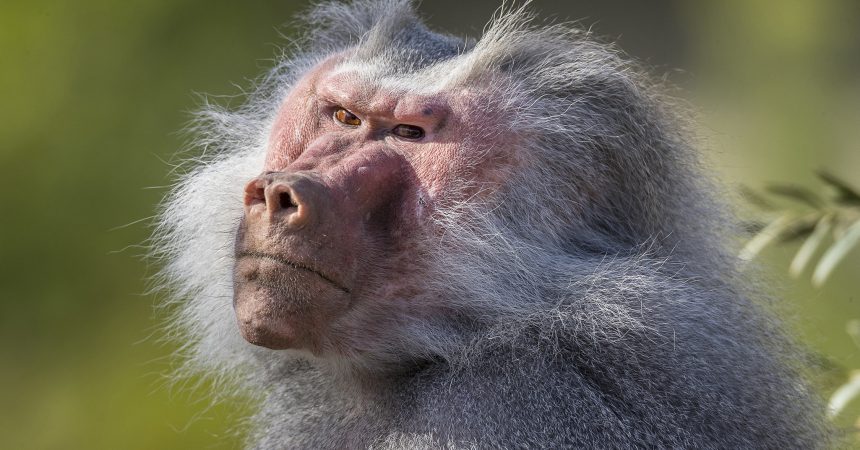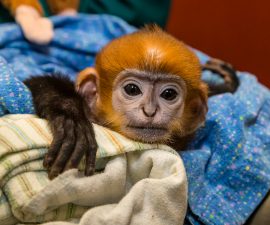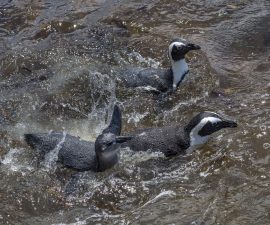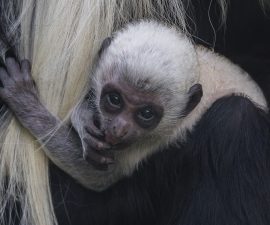The San Diego Zoo’s newest residents—hamadryas baboons—actively explored their new home at the recently opened Ethiopian Highlands habitat in the Conrad Prebys Africa Rocks exhibit. These fascinating primates are already providing great opportunities for Zoo guests to be awed, amazed and surprised, while learning about these colorful animals and their unique social structures and behaviors.
“We are thrilled to have the hamadryas on exhibit for our Zoo guests,” said Dustin Black, primate keeper, San Diego Zoo. “They are doing very well and enjoying their expansive habitat here in Africa Rocks. They spend much of their day doing exactly what hamadryas baboons do—eating, climbing, chasing each other, grooming each other and vocalizing. They have an incredible social dynamic; and it is not only fun, but very fascinating to observe them.”
The Zoo’s hamadryas baboon group is made up of 12 females and eight males, ranging in ages from 23 years to 3 months. Hamadryas baboons are unique among baboon species in that their social structure is strictly patriarchal—the males are in charge and the females are subordinate to the males. These baboons have a large body, a strong build and a dog-like muzzle. Both males and females have brown or light gray fur. Females are smaller and have hairless brown faces, while the male baboon has a distinctive mane of long silvery hair and a bright pink face and backside.
The current “leader” of the Zoo’s hamadryas group is 19-year-old Elvis, recognizable as the largest male. He can often be seen strutting around the exhibit, as well as spending time protecting one of his favorite females, 6-year-old Kurzbein, and her 3-month-old baby girl.
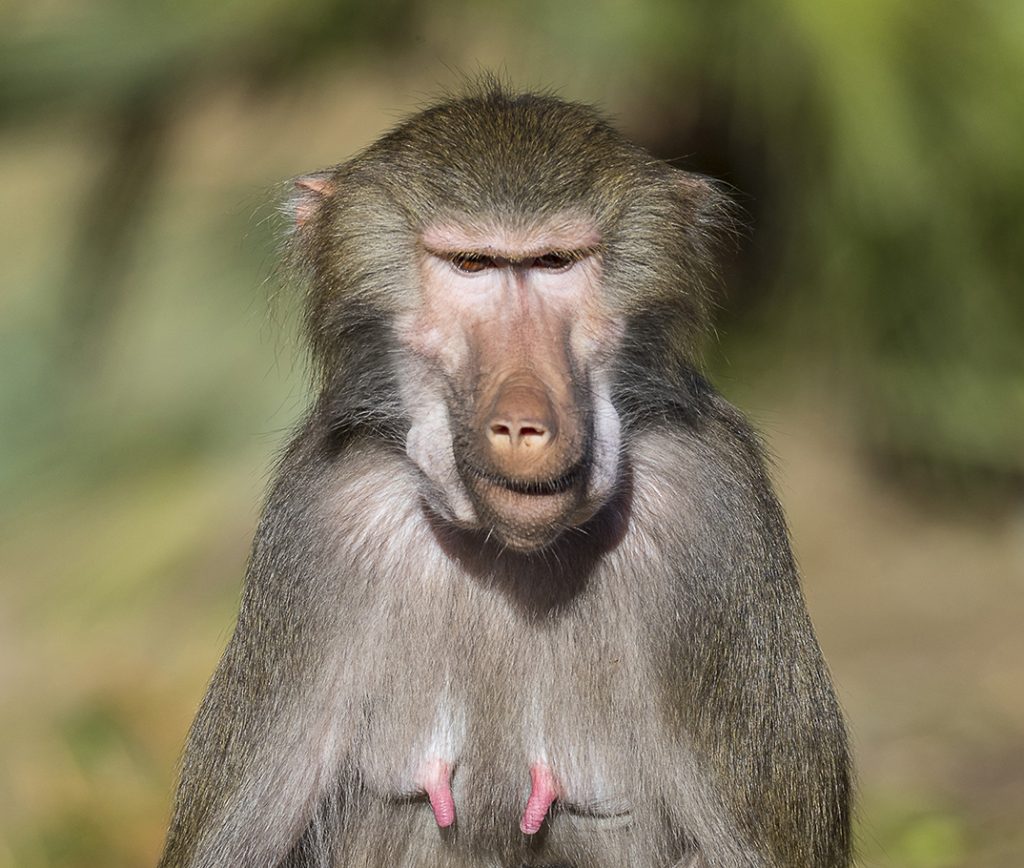
Hamadryas baboons are native to the Ethiopian Highlands in the northeastern region of Africa. They are listed as an animal of least concern on the IUCN Red List of Endangered Species. Africa’s Ethiopian Highlands provide some of the most dramatic landscapes on the planet. The region features rugged mountains and windswept plains, with grassy plateaus, rich valleys and hot deserts. The Ethiopian Highlands habitat in Africa Rocks features the hamadryas baboons, geladas and Nubian ibex, animals that have adapted to survive this dry, windy, challenging environment at the “roof of Africa.” A key plant species from the Ethiopian Highlands also is featured in the Zoo’s new habitat: the red-hot poker tree. Its brilliant scarlet flowers appear at the tip of branchlets when the tree is leafless, signaling nourishing nectar to birds and insects, which in turn serve as pollinators.

